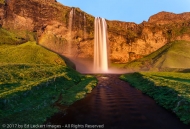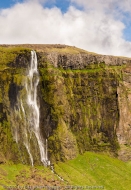


Find answers to common questions below. Click a question to expand the answer.
If you don’t see an answer to your question, please don’t hesitate to contact me!
Yes, I did. All of these images were created by me personally and are Copyright © Ed Leckert Images LLC.
I’ve been taking photographs almost my entire life, but only in the last eight years or so have I been attempting to build a collection of fine art photographs. See my Bio for more details.
Well, I like to think there’s more to it than having a nice camera! But yes, I shoot with a Canon 5D Mark II, a full frame sensor Digital SLR, and a collection of Canon professional (L-series) lenses.
Every photographer manipulates images to some degree, whether they realize it or not. In the days of film, the photographer’s choice of film could make a huge difference in the final result, for example, by rendering images in black and white or in over-saturated colors. Dodging and burning and other darkroom techniques during the printmaking process further altered the final result.
Today’s digital cameras come with a full complement of settings to adjust saturation, contrast, sharpening and others to make images more compelling. You are using these features even if you’ve left them at their factory settings.
My preferred approach, however, is to shoot in “RAW” mode and to make all of my adjustments consciously while viewing the image on a computer monitor rather than letting the camera bake its settings into the images for me. All serious digital photographers work this way.
“RAW” mode is a feature found on more advanced digital cameras that preserves the original unaltered data recorded by the camera’s sensor. The alternative is to allow the camera to make adjustments to the image and compress it, typically into a JPG format, before saving the image data. Much information is permanently lost during this process, so I prefer to capture my images in “RAW” mode. I can later convert the raw data into the final image and make appropriate adjustments on a large, color calibrated desktop computer monitor, where I can make conscious decisions about the final result rather than letting the camera make these decisions for me.
For most of my post-processing workflow I use Adobe Photoshop Lightroom 6. For complex editing such as creating composite images, I use Adobe Photoshop CS6.
It depends! Some images were taken on the side of the road or from parking lots. For others I had to backpack miles into the backcountry, climb thousands of vertical feet, and spend a week sleeping in a tent to get the image. See my articles under News and Adventures for more details about my adventures.
On my most strenouous trips I still take a DSLR body and usually three or so professional lenses, plus a carbon fiber tripod and accessories like filters and extra batteries. I also take a GPS receiver with extra batteries for navigation, but also for geotagging my images.
I try to reduce the weight of my supplies and food as much as possible by using ultralight gear and dried foods so that I have the capacity to handle the photography gear. I also take lenses with smaller maximum apertures that weigh considerably less than their faster counterparts. Of course, it also helps to be in shape!
Geotagging is the marking of images with the geographic location where each image was taken. Longitude, latitude, and altitude are typically stored in the image’s metadata along with other details about the image. This allows me to more accurately caption and keyword my images and to return to an image’s exact location anywhere in the world, if necessary.
Yes, I sell prints through this website and at art fairs and other events.
My standard print paper is Kodak Professional Endura Metallic color negative paper.
No, the process requires professional imaging equipment found only in professional photo labs.
Yes, I cut my own custom mats and optionally frame the print.
All matting materials are made from high quality conservation products from Nielsen Bainbridge. Their patented Artcare technology is used to create the first and only mat and mount boards that actively protect artwork from the damaging effects of air pollution and acids generated by the artwork itself.
Metal frames are made from glossy black or dark grey metal moulding and are ready to hang. This beautiful frame moulding is also produced by industry leader Nielsen Bainbridge.
Wood frames come in various styles, from rustic to classic. Please contact me for a available frame styles when ordering.
Lightweight and impact resistant UV filtering acrylic from Acrylite® or Plexiglas® is used for glazing.
Acrylic offers the beautiful clarity of the finest picture frame glazing, without the heaviness or breakability of glass. It is a safer alternative at half the weight of glass, many times more resistant to impact, and easier to handle. It is safe for use in childrens rooms, schools, sports arenas, and with irreplaceable artwork. Acrylic is more optically pure than glass and does not have a green tint. Acrylic provides exceptional optical purity.
Don’t use regular cleaning supplies on acrylic! You may end up damaging the glazing. Be sure to use a high quality plastic cleaner such as Brillianize® Acrylic Cleaner and Polish or Sprayway® plastic cleaner along with a Microfiber cloth.
Yes, mats are cut to standard sizes so that you can fit them into a standard frame. But keep in mind that if you do not use the proper conservation materials, your print is susceptible to fading from ultraviolet light and to stains from acids in the mount and mat boards used. Materials purchased off the shelf in most consumer framing stores is not conservation grade unless specifically stated. Damage from these causes is not covered by the standard warranty.
Custom framing, on the other hand, is very expensive, likely several times the cost of letting me frame the print for you.
Canvas Gallery Wraps are also available as a popular alternative. Canvas is especially suitable for images that have a “painterly” look, but any image will look great on canvas.
Canvas Prints are printed on high quality, heavyweight canvas and then coated to protect the surface from scratches and light. Canvases are stretched on sturdy wood frames and arrive ready to display right out of the box. All the hardware you need is already attached.
Absolutely! Not to be confused with my metallic paper prints, metal prints are especially suitable for colorful, saturated images. The image is infused right into the surface of a solid sheet of metal for a contemporary look that you’ll need to see firsthand to truly appreciate. The result of this process is a rich iridescent sheen, bright vivid colors, and high-definition detail that can’t be matched by conventional paper prints. Attached to the back of this thin but sturdy sheet of metal is a floating mount that suspends your artwork ½” away from the surface of the wall.
No. Unmatted prints are too easily damaged. In order to provide the generous warranty on my work, I need to have assurance that the print has been properly matted and protected using quality materials.
All prints are warranted for one year from date of purchase against defects in the print, the mat, the frame (if applicable), the matting and framing assembly, or if you decide the print just isn’t working in your space. Physical damage to the print after purchase is not covered, but please call to inquire about repairs.
Because I travel quite a bit to acquire new images, I am not always available to ship an order out immediately. In fact, it may take several weeks for you to receive your order, particularly if I do not have the print size and style already on hand. If you need an order by a specific date, please contact me before placing your order to insure that I can meet your deadline.
Shipping Rates are listed here.
Yes, I’d love to meet you! I can hand-deliver your prints to a mutually convenient location in the Boise area. Select “Idaho (Local Pickup)” as your shipping address State instead of the “Idaho” option, and you will not be charged for shipping.
Yes, I license all of my imagery through Getty Images and 500px. Each image in my Image Gallery that is already represented by Getty Images has a button under the image that takes you its page on the Getty Images website. These images are available for immediate licensing and download.
All other images are available for license from 500px. Look for the blue 500px button under the image to license and download from 500px.
If you don’t see either the Getty Images or 500px button under an image you need, please contact me directly.
Last updated: March, 2018